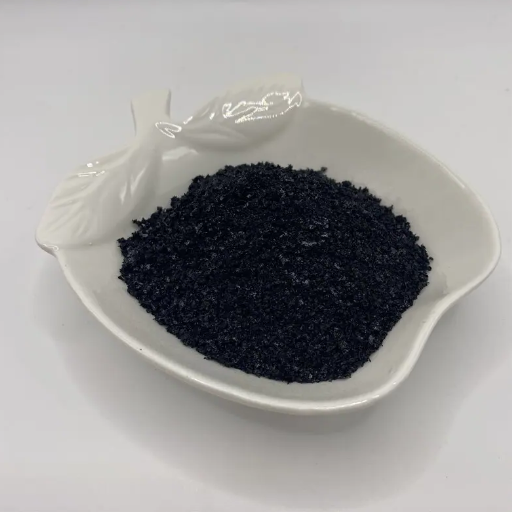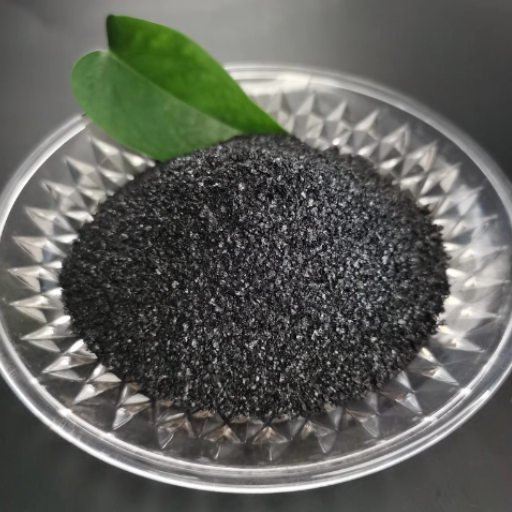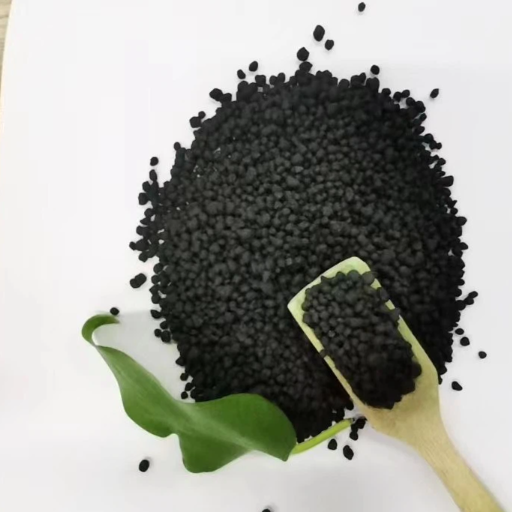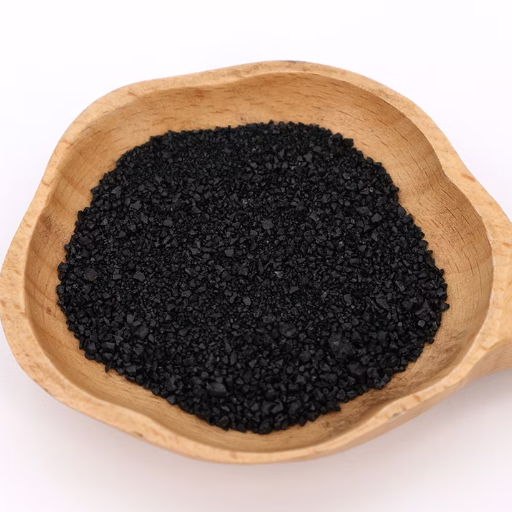Potassium humate fertilizer has emerged as a game-changing solution in modern agriculture, offering a sustainable and highly effective way to enhance soil health and boost crop productivity. Derived from natural humic substances, this advanced fertilizer stands out for its ability to improve nutrient uptake, enrich soil structure, and stimulate beneficial microbial activity—key factors in achieving high yields and long-term soil fertility. Whether you’re a seasoned farmer or an agricultural enthusiast, understanding the benefits, diverse applications, and recommended dosages of potassium humate can help you unlock the full potential of your crops. This article dives deep into the science and practical value of potassium humate, equipping you with the insights needed to optimize its use for superior results.
Understanding Potassium Humate
What is Potassium Humate?
K-Potassium humate is a water-soluble salt of humic acid extracted mainly from humified or organic material such as leonardite or lignite. The agent is widely used to improve agricultural soils, enhance nutrient uptake by plants, and stimulate plant growth. It acts as an organic fertilizer being applied as a soil amendment; the potassium humate activates microbial activity and improves structure, especially in degraded soils.
The major beneficial aspect of potassium humate is its ability to chelate essential nutrients such as iron, zinc, and magnesium, ensuring that they all remain free for plant intake. It prevents nutrients from leaching into the soil and thus promotes the efficiency of fertilizer application, resulting in healthier crops and higher yields. It also enhances water retention in the soil so that the crops can endure drought periods and variations in moisture.
Potassium humate enjoys high versatility to match different soil types and agricultural systems. The product can either be applied to the soil surface sprayed on plants directly or added to irrigation water, thus creating the dual effect of soil and plant nutrition. Potassium humate is also found to be compatible with many fertilizers and pesticides, which means that farmers can fairly easily incorporate it into their current crop management practices. Hence, by minimizing soil degradation and nutrient inefficiencies, potassium humate could be a major player in creating sustainable and highly productive agriculture.
Composition and Sources of Potassium Humate
Potassium humate contains a range of different humic substances, chiefly humic acid and fulvic acid, creatable potassium, and other essential nutrients. These substances are formed by the decomposition of organic matter by various natural processes over the duration of thousands to millions of years, yielding humified compounds rich in carbon and biologically active elements. The high potassium content of potassium humate makes it especially useful in enhancing soil conditioning and plant nutrition, which in turn promotes root growth and the resistance power of plants.
Leonardite is essentially the main source of potassium humate, which has an oxidized degree of lignite coal consisting of humic materials in richer concentrations. It is mined from natural deposits and processed to extract and purify humic substances. Generally, the process includes some form of alkali extraction method whereby soluble humates are separated while retaining their natural state for use in agriculture. The source is generally considered to be environmentally friendly, given the minimal treatment involved.
Occasionally, potassium humate may be prepared from other organic matters, such as peat or compost, though these sources are the least common. The Leonardite source is the best and most widely applied due to the heavy contents of humic acids, cheaper production costs, and wider availability. Thus, multiple sources make potassium humate production sustainable while catering to the contemporary agriculture demands of today.
Types of Potassium Humate Fertilizers
Potassium humate fertilizers are produced mainly in powder, granular, and liquid forms, with each form having its own set of advantages for agricultural purposes. These different forms of potassium humate fertilizer thus cater to the varying needs and methods of farming so that there is the greatest flexibility and efficiency in the delivery of nutrients.
- Powdered potassium humate: This is the most concentrated form and can thus be blended with other fertilizers or directly applied to the soil. Because it dispenses quickly in water, it can be used in fertigation systems or as a foliar spray. Such powdered formulation can especially be used in areas where immediate uptake is required by the plant.
- Granulated Potassium Humate: This form is generally used for slow-release nutrient amendments. Under normal conditions, they disintegrate more or less gradually and continuously feed nutrients into the soil until the nutrient requirements of the crops reach an equilibrium with the nutrients in the soil, which is well suited to the long growth cycle of such crops. The granules can be spread manually or mechanically with a spreader, which is very convenient for big farming operations.
- Liquid Potassium Humate: Being very versatile and easy to apply makes the liquid formulation a favorite. It is used typically for fertigation, wherein nutrients are delivered directly to the root zone with pinpoint precision. By doing so, the absorption efficiency of nutrients is greatly improved. Usually, it is combined with several other liquid fertilizers to make a complete nutrient solution.
Each form basically suits a particular application, and in addition, the choice of a potassium humate fertilizer really needs to be considered in light of soil type, crop requirement, and farming practices. Selecting the right type maximizes agricultural production while sustaining healthy soil.
Benefits of Using Potassium Humate Fertilizers

Enhancement of Soil Fertility
Potassium humate fertilizers increase soil fertility by enhancing the structure of soils and nutrient availability. Humate fertilizers help increase the soil’s cation exchange capacity (CEC) to hold and retain the essential nutrients, which otherwise would have been leached away by water, thereby ensuring that these nutrients are available to plants constantly. This availability of nutrients supports the healthy growth and development of the plants. The fertilizer also increases water retention in the soil, thus avoiding any drought stress for the crops and maintaining optimum conditions.
Hence, these fertilizers act as a catalyst in the promotion of microbial activity in the soil. Potassium humate fertilization supplies organic carbon to the soil for the multiplication of useful microbes. These microbes digest the organic matter and liberate nutrients in forms easily absorbed by plants. Over time, such biological activity improves the soil quality and nurtures a balanced ecosystem that is ready to sustain long-term crop productivity.
These are also the fertilizers that sort the soil degradation issues caused by intensive farming. They ensure better aeration and reduce soil compaction for healthier root development. Restoration of degraded soils and making them resistant to erosion and salinity are other issues solved by such fertilizers. Therefore, by consistently incorporating potassium humate into the farming system, farmers are building up soil fertility for sustainable crop production in the future.
Improvement in Crop Yield
The usage of potassium humate inevitably facilitates greater yield with the absorption and availability of nutrients in the soil. It does so by stimulating microbial activity and by improving soil retention for nutrients including nitrogen, phosphorus, and potassium: nutrients that have to be accessible to plants for growth and along with that directly influence yield level.
There are opportunities that potassium humate presents in enhancing plant resistance against drought, salinity, and temperature stresses. It improves water retention in soils and stimulates root development, allowing the crop to continue healthy growth under stress. The resistance-based higher yield in those areas where the environment usually hampers agriculture would be counted.
It has also been established that potassium humate improves food quality when applied to modern farming practices. Enhanced nutrient uptake, in terms of potassium humate, gives rise to crops that generally are better in nutritional value, texture, and storage shelf life. These achievements position potassium humate as a key factor in sustainable agriculture which is aimed directly at fulfilling the need for both quantity and quality food production.
Environmental Benefits of Potassium Humate
Potassium humate provides several environmental benefits, making it an essential component of modern sustainable agricultural processes. Its ability to improve the physical structure of soils is one of the key ecological advantages. When applied to soil, potassium humate increases its porosity and aggregate stability and decreases soil compaction and water retention ability. It thus optimizes root aeration and availability of water to plants and also minimizes runoff and soil erosion. Such improvements go directly to the sustenance of the soil’s health over the long term, thus offering a more resilient agricultural system to climatic variability.
The second key environmental advantage that potassium humate offers is its reduction of environmental degradation caused by conventional chemical fertilizers. As a chelating agent, it binds with essential nutrient elements in the soil and prevents the nutrients from being leached away into less productive layers of the soil. For instance, nitrogen and phosphorus, which rank as the most vital nutrients contaminating water bodies through runoff from agricultural lands, stay within the soil matrix in the presence of potassium humate. This reduction in nutrient losses also reduces eutrophication within nearby aquatic systems and increases fertilizer efficiency. In doing so, potassium humate enhances nutrient use efficiency, thus diminishing the need for excessive fertilizer application and further reducing chemical pollution and greenhouse gas emissions from agricultural sources.
The other benefit of potassium humate linked to carbon sequestration is the direct mechanism to counteract rising atmospheric carbon dioxide levels. Being potassium humate derived from natural organic humic substances, it favors the accumulation of stable organic matter in soils. This conversion not only sequesters carbon in the soils for longer periods but also increases soil fertility which is ultimately beneficial for crop productivity. Integration of potassium humate in agricultural practices promotes carbon sink building and environmental sustainability simultaneously, thus keeping pace with the global climate agenda. Furthermore, these multiple benefits jointly underscore the value of potassium humate in making environmentally conscious farming possible.
Potassium Humate Application Methods

Foliar Application Techniques
The foliar application involves gently misting the solution on the leaves so that it can be rapidly absorbed through the stomatal pores and epidermal cells. Foliar feeding is applied in those occasions of life when the plant really needs extra nourishment, e.g., flowering, or the formation of fruit, pods, and seeds should be supported immediately because root uptake is not possible during such times. It is often claimed that foliar feeding improves photosynthetic activity by increasing the chlorophyll content, thereby imparting more vigor to the plant and hence yields.
Generally, solutions for foliar application of potassium humates range in concentration between 0.01% and 0.1%, depending on the crop species and growth stage. The treatment is carried out primarily in the early morning or late evening to avoid too quick evaporation of the solution under direct sunlight and to prevent photolysis. Surfactants are used for better adhesion and penetration by the solution, thereby ensuring uniform coverage of the entire leaf surface.
Some studies show that foliar spraying along compatible micronutrients or growth stimulators increases synergistic effects, hence providing the best plant health output. Frequent applications aligned with physiological stages can limit stress, such as drought, pest attacks, or nutrient imbalances. New technologies ensure precise delivery of sprays, such as drone-assisted sprayers or atomizers for uniform distribution, reducing wastage and maximizing efficacy.
Soil Application Methods
The delivery of nutrients directly into the plant root zone for maximum absorption employs numerous soil application techniques practiced in modern agriculture. Common to these methods are placing fertilizers, nutrients, or amendments on the surface of the soil or mixing them into the soil profile by means of tillage or irrigation methods. The soil application method is more suitable for giving macronutrients such as nitrogen, phosphorus, and potassium, which are needed in larger quantities. Proper application methods help to ensure nutrient losses are minimized, whether volatilization, leaching, or surface runoff, thereby improving nutrient-use efficiency and sustainability.
In the case of soil application, the effectiveness greatly depends on soil types, textures, and moisture contents. For instance, sandy soils having high permeability are leached easily and require nutrient application in small quantities, but quite frequently to maintain the adequate supply to the plant roots. In contrast, larger quantities of nutrients may be applied in heavier clay soils and slowly released due to their lower permeability. Fertilizers can be correctly applied at accurate rates according to soil testing and plant tissue analysis, ensuring that the nutrients are not ever over-applied or deficient in any case, maximizing crop production with the least environmental hazards.
Modern scientific developments in soil application technology undergird the more traditional farming systems. Fertigation systems, capable of joining fertilization with irrigation, have grown in expression mainly due to their capacity for uniform nutrient delivery to the crop root zone. Similarly, precision agriculture tools incorporate GPS, IoT devices, and soil sensors to monitor nutrient levels in real time and direct site-specific applications to ultra-high precision. Hence, while these inventions ensure the optimization of crop yields, they also pave the way towards the conservation of resources to construct further sustainable agriculture, contributing positively toward ensuring food security in the face of escalating global food demand.
Drip Irrigation Integration
Drips irrigation systems in the agricultural world represent one of the most efficient water delivery methods, saving water from wastage and enhancing crop productivity. Water is supplied to the root zones of plants through a network of carefully engineered pipes, emitters, and tubing, thus limiting losses through evaporation or runoff. With the introduction of intelligent technologies such as IoT-based sensors and automated control systems into conventional irrigation, it became feasible to implement real-time monitoring of soil moisture and define irrigation schedules based on specific crop needs.
It appears that advanced irrigation systems can increase water-use efficiency by up to 90%, which remains a matter of utmost importance for arid and semi-arid regions struggling against water scarcity. These systems have a positive impact on nutrient management, as they allow fertigation, in which fertilizers are stirred into the irrigation water for an even spread. By limiting the practice of over-watering and over-application of chemicals, farmers are saving pure resources and also curbing pollution from runoff.
For instance, a comparative study in regions adopting precision irrigation reported average yield increases ranging from 20 to 30% for cereal crops and water savings in excess of 40%. In other words, these statistics reinforce the necessity of drip irrigation for tackling pressing global concerns such as freshwater conservation and sustainable food production without putting too much burden on non-renewable resources. Putting it one way, with this undercurrent, evolution makes the technology a sustainable way for agricultural practices in the future.
Determining Application Dosage

Factors Influencing Application Dosage
- Environmental Conditions: Various environmental factors play a crucial role in influencing the dosage of the application. Parameters like soil type, ambient temperature, humidity levels, and rainfall patterns dictate the absorption and efficacy of the applied solution. For example, sandy soils being highly permeable need high dosage amounts because of leaching, whilst clay soils are usually given less given preventing waterlogging and buildup of chemicals.
- Crop Type and Growth Stage: The crop’s species and its growth stage greatly influence dosage delivery. Different crops have varying nutrient requirements, pest thresholds, and water uptake capacities. For instance, leafy green crops may require much more nutrient supply during the vegetative phase than cereal crops when close to maturity. Thus, dosage becomes adjusted accordingly to optimize coverage and use of resources.
- Formulation Characteristics: The chemical and physical characteristics of the formulation are of great importance. Solubility, concentration, and mode of delivery (e.g., granules, liquid emulsions) also factor into dosage calculations. Usually, high concentrations are applied at a smaller scale so as not to overdose, whereas fast degradation formulation may need a higher dosage initially to maintain efficacy in field conditions.
- Calibration of Equipment: The calibration of equipment is paramount in defining the dosage delivery. The types of spray nozzles, flow rate, pressure settings, and others should all match the application rate specifications uniformly to reduce wastage. Studies have proved that faulty calibrated equipment may result in under- or overdosing, thus affecting crop output and causing persisting environmental degradation.
- Regulatory Compliance and Safety Standards: Based on dose application, one has to meet regulatory and safety standards. Each area then imposes fixed figures on rates of application to deter environmental pollution and to encompass polluting dangers to human and animal realms. Compliance makes sure farmers practice legal consideration along with environmental conservation.
By building a system for analyzing these factors, applicators will be able to design and implement precision application techniques that lead to maximum efficiency with minimum wastage and satisfy the varying requirements of different agricultural systems.
Recommended Dosage for Various Crops
Recommended uptake of agricultural inputs such as fertilizers or pesticides greatly hinges upon the crop nature, the soil interactions, and the environmental factors acting over any region on the land. Forging a brief perspective on dosage instructions guiding a few widely cultivated crops out there:
- Wheat: For optimum growth, nitrogen application generally varies between 80 and 120 pounds per acre, depending on the nitrate content in the soil or if projections on grain yields are made to a higher level. Phosphorus may be added as shown by a soil test, at about 25 to 50 pounds on a P2O5 basis per acre.
- Corn: The nitrogen needs of corn usually range between 120 and 180 pounds per acre, depending upon hybrid, organic matter in the soil, and the nature of crops either cultivated or demolished before. Applications of phosphoric acid (P2O5) and potash (K2O) should be adjusted as indicated by soil tests, usually on the order of 50 to 100 pounds per acre.
- Rice: For rice fertilization, recommendations call for the application of N at rates of 30-50 pounds per acre in split doses at critical stages of growth (e.g., pre-planting, tillering, and panicle initiation). Phosphorus and potassium fertilizers are basically applied at rates of 25 to 40 pounds per acre, depending on the evaluation of the nutrient status of the soil.
- Soybeans: Soybeans fix nitrogen with the help of rhizobium bacteria, so nitrogen fertilizer is usually not applied. However, phosphorus and potassium fertilizer rates are according to the fertility status of the soil, which is usually around 30 to 60 pounds per acre.
- Tomatoes: Such vegetable crops as tomatoes require very careful nutrient management. Nitrogen application rates are commonly in the range of 100 to 150 pounds per acre, while phosphorus is applied at a rate of about 20 to 50 pounds of P2O5 per acre. High-potassium demand in good-yielding scenarios often exceeds 100 pounds of K2O per acre.
Any bona fide application should be preceded by soil tests and nutrient analysis so that the stated doses suit the immediate conditions of agriculture. The ultimate test for grain set, however, is rain’s occurrence. Adjuncts such as prevailing weather conditions of a region, irrigation schedule, and Comstock in crop management technology could serve as a guide for further modifications in dosage. All these best practices, when customized further, aim at conserving resources, mitigating environmental hazards, and rendering the greatest sustainable yield.
Adjusting Dosage Based on Soil Conditions
I emphasize that adjusting dosage according to the soil environment indeed plays an important role in sustainable crop management. Soil type, pH, moisture content, and nutrient level can all determine the efficiency of any fertilizer or treatment applied. Being able to do accurate soil testing ensures that I am knowledgeable about the intricate details of these parameters. With such firm data, I never have to guess or operate on assumptions because I can work faithfully from the soil data and its identified deficiencies toward, thereafter, choosing the type and dosage of nutrients needed both by the soil and by the crop.
Such adjustment would have to be made through the use of soil sampling and soil analytical techniques, to establish the baseline nutrient status of the soil. For example, sandy soils with low organic matter generally require application of moderate amounts of nutrients more frequently, so that nutrients are not lost through leaching, whereas clay soils with high organic matter usually require slow-release nutrients to minimize runoff. Armed with decision support tools, I combine these findings with localized agronomic information to fine-tune the application timing and dosage. Application timing and dosage calculated in this way increase nutrient uptake in crops, thereby reducing nutrient wastage and hence optimizing economic and environmental benefits.
Thus, dosage adjustment according to soil environment falls perfectly within the activities of precision agriculture. It aims to preempt the great variations that occur over a field so that the maintenance of soil health, prevention from degradation, and maximum yield may be achieved. It is certainly not about maximizing yield alone but sustenance of the soil for a long time to come and a balanced ecosystem. It is in this organized manner that modern agriculture heavily endorses the importance of informed decision-making.
Efficacy of Potassium Humate

Comparative Analysis with Other Fertilizers
Potassium humate has been stated to increase nutrient uptake, kill crop yields, and environmental amelioration compared with mineral fertilizers, vermicompost, and compost.
| Aspect | Potassium Humate | Chemical Fertilizers | Organic Vermicompost | Compost |
|---|---|---|---|---|
|
Efficiency |
High |
Moderate |
Moderate |
Low |
|
Productivity |
Significant |
Moderate |
Moderate |
Low |
|
Environmental |
Low Impact |
High Impact |
Low Impact |
Low Impact |
|
Affordability |
Moderate |
High |
Moderate |
Low |
|
Soil Quality |
Enhanced |
Degraded |
Enhanced |
Enhanced |
Long-term Effects of Potassium Humate Use
Long-term potassium humate application has been proven to benefit soil health and agricultural productivity significantly. Among the key advantages observed over the long term are the increase in soil organic matter content, enhancement in soil structure, water retention capacity, and aggregation.
Also, potassium humate favors the steady mineralization of nutrients, making them available to plants during more than one growing period. This slow-release feature diminishes the leaching of nutrients into the water bodies, solving environmental and resource-related concerns. Long-term trials also show increased microbial activity that husband the good rhizosphere that aids plant growth. Such stimulation of soil biota is a necessity for regenerative farming.
The field trials have also shown that constant implementation of potassium humate in fertilizer management systems improves plants’ ability to withstand abiotic stress caused by drought, salinity, and deficiency of nutrients absorbed in different units of time. This ultimately assures higher yield stability and less application of chemical fertilizers in support of sustainable agricultural practices.
Another significant factor to consider is the economics of potassium humate usage in which helps considerably reduce input costs over the long term by optimizing the efficiency of fertilizers and minimizing their frequency of application. In the end, this would help farmers to keep their soil fertile, in line with the modern standards of environmentalism, and sustain their livelihood for future years.
References
Frequently Asked Questions (FAQ)
Q: What is potassium humate fertilizer?
A: Potassium humate fertilizer is an organic fertilizer derived from humic acid, which enhances soil health and improves nutrient availability for plants. It contains potassium and other essential nutrients that stimulate plant growth and improve crop yield.
Q: How does potassium humate work in the soil?
A: Potassium humate works by improving soil structure and increasing the cation exchange capacity, allowing for better nutrient uptake by plants. It enhances microbial activity and promotes the growth of beneficial microorganisms in the soil.
Q: What are the benefits of using potassium humate fertilizers?
A: The benefits of using potassium humate fertilizers include improved soil fertility, enhanced plant growth, better nutrient release, and increased drought resistance. It also helps in seed germination and increases overall crop quality.
Q: How can potassium humate enhance nutrient uptake?
A: Potassium humate enhances nutrient uptake by improving soil properties and increasing the availability of trace elements. Its soluble nature allows for quick absorption by plant roots, stimulating growth and productivity.
Q: What is the recommended application dosage for potassium humate?
A: The recommended application dosage for potassium humate typically ranges from 5-10kgs per hectare, depending on soil type and crop requirements. It’s best to apply it in combination with other fertilizers for optimal results.
Q: Can potassium humate be used in organic farming?
A: Yes, potassium humate is suitable for use in organic farming as it is derived from natural sources and enhances soil health without the use of synthetic chemicals. It acts as a biological stimulant for plant growth.
Q: How does potassium humate improve fruit quality?
A: Potassium humate improves fruit quality by enhancing nutrient uptake and promoting healthy growth. It increases the content of essential nutrients in the fruit, resulting in better taste, texture, and shelf life.
Q: What is the effect of potassium humate on crop yield?
A: The effect of potassium humate on crop yield is significant, as it stimulates plant growth and improves soil fertility. This leads to increased production and higher quality crops, making it a valuable addition to any fertilization program.
Q: How should potassium humate be applied for best results?
A: For best results, potassium humate can be applied through soil application or as a foliar spray. Using it in conjunction with drip irrigation can also enhance its effects, ensuring optimal nutrient delivery to plants.
Q: What makes potassium humate an effective plant growth stimulant?
A: Potassium humate is an effective plant growth stimulant due to its ability to improve soil structure, enhance microbial activity, and increase nutrient availability. Its biologically active components stimulate root growth and overall plant development.







